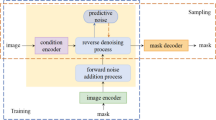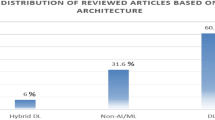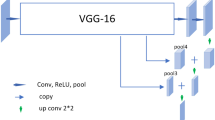Summary
Numerous methods have been published to segment the infarct tissue in the left ventricle, most of them either need manual work, post-processing, or suffer from poor reproducibility. We proposed an automatic segmentation method for segmenting the infarct tissue in left ventricle with myocardial infarction. Cardiac images of a total of 60 diseased hearts (55 human hearts and 5 porcine hearts) were used in this study. The epicardial and endocardial boundaries of the ventricles in every 2D slice of the cardiac magnetic resonance with late gadolinium enhancement images were manually segmented. The subsequent pipeline of infarct tissue segmentation is fully automatic. The segmentation results with the automatic algorithm proposed in this paper were compared to the consensus ground truth. The median of Dice overlap between our automatic method and the consensus ground truth is 0.79. We also compared the automatic method with the consensus ground truth using different image sources from different centers with different scan parameters and different scan machines. The results showed that the Dice overlap with the public dataset was 0.83, and the overall Dice overlap was 0.79. The results show that our method is robust with respect to different MRI image sources, which were scanned by different centers with different image collection parameters. The segmentation accuracy we obtained is comparable to or better than that of the conventional semi-automatic methods. Our segmentation method may be useful for processing large amount of dataset in clinic.
Similar content being viewed by others
References
Writing Group Members; Mozaffarian D, Benjamin EJ, et al. Executive Summary: Heart Disease and Stroke Statistics—2016 Update: A Report From the American Heart Association. Circulation, 2016,133(4):447–454
Alexandre J, Saloux E, Dugué AE, et al. Scar extent evaluated by late gadolinium enhancement CMR: a powerful predictor of long term appropriate ICD therapy in patients with coronary artery disease. J Cardiovasc Magn Reson, 2013,15(1):2
West AM, Kramer CM. Cardiovascular magnetic resonance imaging of myocardial infarction, viability, and cardiomyopathies. Curr Probl Cardiol, 2010,35(4): 176–220
Schelbert EB, Wong TC. Imaging the area at risk in myocardial infarction with cardiovascular magnetic resonance. J Am Heart Assoc, 2014,3(4):e001253
Schelbert EB, Hsu LY, Anderson SA, et al. Late gadolinium-enhancement cardiac magnetic resonance identifies postinfarction myocardial fibrosis and the border zone at the near cellular level in ex vivo rat heart. Circ Cardiovasc Imaging, 2010,3(6):743–752
Perez-David E, Arenal A, Rubio-Guivernau JL, et al. Noninvasive identification of ventricular tachycardia-related conducting channels using contrast-enhanced magnetic resonance imaging in patients with chronic myocardial infarction comparison of signal intensity scar mapping and endocardial voltage mapping. J Am Coll Cardiol, 2011,57(2):184–194
Fernández-Armenta J, Berruezo A, Andreu D, et al. Three-Dimensional Architecture of Scar and Conducting Channels Based on High Resolution ce-CMR: Insights for Ventricular Tachycardia Ablation. Circ Arrhythm Electrophysiol, 2013,6(3):528–537
Deng D, Prakosa A, Shade J, et al. Characterizing Conduction Channels in Postinfarction Patients Using a Personalized Virtual Heart. Biophys J, 2019,117(12): 2287–2294
Prakosa A, Arevalo HJ, DENG D, et al. Personalized virtual-heart technology for guiding the ablation of infarct-related ventricular tachycardia. Nat Biomed Eng, 2018,2(10):732–740
Deng D, Prakosa A, Shade J, et al. Sensitivity of Ablation Targets Prediction to Electrophysiological Parameter Variability in Image-Based Computational Models of Ventricular Tachycardia in Post-infarction Patients. Front Physiol, 2019,10:628
Prakosa A, Malamas P, Zhang S, et al. Methodology for image-based reconstruction of ventricular geometry for patient-specific modeling of cardiac electrophysiology. Prog Biophys Mol Bio, 2014,115(2–3):226–234
Amado LC, Gerber BL, Gupta SN, et al. Accurate and objective infarct sizing by contrast-enhanced magnetic resonance imaging in a canine myocardial infarction model. J Am Coll Cardiol, 2004,44(12):2383–2389
Flett AS, Hasleton J, Cook C, et al. Evaluation of Techniques for the Quantification of Myocardial Scar of Differing Etiology Using Cardiac Magnetic Resonance. JACC Cardiovasc Imaging, 2011,4(2):150–156
Karim R, Bhagirath P, Claus P, et al. Evaluation of state-of-the-art segmentation algorithms for left ventricle infarct from late Gadolinium enhancement MR images. Med Image Anal, 2016,30:95–107
Carminati MC, Boniotti C, Fusini L, et al. Comparison of Image Processing Techniques for Nonviable Tissue Quantification in Late Gadolinium Enhancement Cardiac Magnetic Resonance Images. J Thorac Imaging, 2016,31(3):168–176
Liu D, Ma X, Liu J, et al. Quantitative analysis of late gadolinium enhancement in hypertrophic cardiomyopathy: comparison of diagnostic performance in myocardial fibrosis between gadobutrol and gadopentetate dimeglumine. Int J Cardiovasc Imaging, 2017,33(8):1191–1200
Hennemuth A, Friman O, Huellebrand M, et al. Mixture-Model-Based Segmentation of Myocardial Delayed Enhancement MRI, Berlin, Heidelberg, F, 2013 [C]. Springer Berlin Heidelberg.
Pop M, Ghugre NR, Ramanan V, et al. Quantification of fibrosis in infarcted swine hearts by ex vivo late gadolinium-enhancement and diffusion-weighted MRI methods. Phys Med Biol, 2013,58(15):5009–5028
Rutherford SL, Trew ML, Sands GB, et al. HighResolution 3-Dimensional Reconstruction of the Infarct Border Zone Impact of Structural Remodeling on Electrical Activation. Circ Res, 2012,111(3):301–311
Zabihollahy F, White JA, Ukwatta E. Convolutional neural network-based approach for segmentation of left ventricle myocardial scar from 3D late gadolinium enhancement MR images. Med Phys, 2019,46(4):1740–1751
Deng DD, Nikolov P, Arevalo HJ, et al. Optimal contrast-enhanced MRI image thresholding for accurate prediction of ventricular tachycardia using ex-vivo high resolution models. Comput Biol Med, 2018,102:426–432
Ng J, Jacobson JT, Ng JK, et al. Virtual electrophysiological study in a 3-dimensional cardiac magnetic resonance imaging model of porcine myocardial infarction. J Am Coll Cardiol, 2012,60(5):423–430
Author information
Authors and Affiliations
Corresponding authors
Additional information
Conflict of Interest Statement
The authors declare that there is no conflict of interest related to the contents of this article.
This work was supported by the National Key Research and Development Program of China (No. 2016YFC1301002 to Jianzeng Dong), the National Natural Science Foun dation of China (No. 81901841 to Dongdong Deng, No. 81671650 and No. 81971569 to Yi He, No. 61527811 to Ling Xia), and the Key Research and Development Program of Zhejiang Province (No. 2020C03016 to Ling Xia). Dongdong Deng also acknowledges support from Dalian University of Technology (No. DUT18RC(3)068).
Electronic supplementary material
Rights and permissions
About this article
Cite this article
Wu, Zh., Sun, Lp., Liu, Yl. et al. Fully Automatic Scar Segmentation for Late Gadolinium Enhancement MRI Images in Left Ventricle with Myocardial Infarction. CURR MED SCI 41, 398–404 (2021). https://doi.org/10.1007/s11596-021-2360-z
Received:
Accepted:
Published:
Issue Date:
DOI: https://doi.org/10.1007/s11596-021-2360-z




